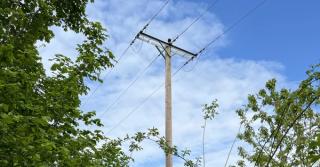
Changes coming to Alberta's OHS code for Occupational Noise
- Post Date
- 11 April 2023
- Read Time
- 3 minutes

The Government of Alberta has enacted changes to the Occupational Health and Safety code that will come into effect on March 31, 2023. There are several updates to the hearing conservation program requirements, including two changes to the assessment and management of noise. Read on for a brief overview and to find out what these changes mean for you and your organization.
1. Reduced 82 dBA threshold for conducting noise exposure assessments
The OHS code now requires a noise exposure assessment in all areas measured 82 dBA (sound pressure level in decibels, A-weighted) and above, indoors and outdoors. The sound level that triggers the requirement for hearing protection for workers on an 8-hour shift remains 85 dBA. A noise exposure assessment must be carried out by a competent person (with a newly clarified definition) and can consist of a noise dosimetry study for workers or sound level measurements at workstations or in affected areas with exposure times calculated based on typical work patterns.
What does this mean for employers, facility operators and HSE representatives?
This will not result in changes to existing signage or hearing protection administrative/PPE controls in areas that have been previously measured 85 dBA and above. However, for future facility designs or changes to equipment or operations, the sound level target should be under 82 dBA to avoid triggering the requirement for additional noise exposure assessment and to provide a margin of safety, especially for workers who may work longer than 8-hour shifts. The code now explicitly mentions that designing work areas to be under the 85 dBA limit is best practice, and this aligns with the well-established hierarchy of controls where PPE (hearing protection in this case) is the last line of protection.
2. Updated noise management program requirements
The requirements for noise management programs have been streamlined and harmonized with CSA standards. The code requires annual review of the entire noise management program. Many people are unaware that best practice includes periodic audits of sound levels and exposure times in their facilities, as sound levels can change over time with wear and tear or from changes to equipment and processes.
An opportunity to improve the hearing conservation program at your workplace
As part of this year’s noise management program review, employers, facility operators and HSE representatives should review facility sound level surveys or noise maps and identify areas 82 dBA and above that haven’t already been assessed for noise exposure. If any significant changes to equipment or operations have occurred since the date of the last sound survey, consider redoing the survey. It’s also an opportune time to look at the program as a whole and to confirm that the elements of the program align with national CSA standards, streamline and simplify to promote worker understanding and participation, and practice the newly updated hearing protection fit testing procedures.
Combining the assessment of occupational noise with environmental noise impact assessment can be a cost-effective way to meet audit requirements and optimize noise control measures. During the design stage of a facility, acoustics consultants can evaluate risk from both points of view and develop proactive measures to control noise by setting appropriate sound level ratings in procurement specifications and including noise control in the design rather than reacting with costly retrofits.
More information can be found at the Government of Alberta web links below, including details on other changes regarding hearing conservation and other sections of the OHS code.
OHS Publication. Change highlights: Noise exposure – Part 16 in the OHS Code (alberta.ca)
Ministerial Order 2022-01 [Jobs, Economy and Northern Development] - Open Government (alberta.ca)
Get in touch with our Acoustics & Vibration team to learn more about how you can optimize your occupational and environmental noise management programs.

